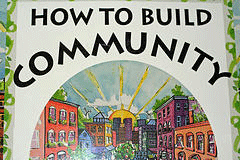
As a result of such variety, “place” versus “people”-based approaches to urban development in particular have long been debated among scholars, policymakers, and various community development practitioners. The divergence of opinion revolves around one fundamental question: should the primary approach to neighborhood development focus on geographical surroundings by refurbishing housing and attracting new businesses? Or, should the approach be to develop people by concentrating on economic and social empowerment for existing, longtime residents, especially those who are low income and of color?
Ideally, some amount of both would be simultaneously pursued but this has proved daunting in various environments. Often, urban development strategies tend to lean more toward place when communities face significant local deterioration and economic disinvestment. In many such instances, altering the composition of neighborhoods—gentrification—becomes the goal, but when the places where people have lived become less and less affordable, new challenges are created that often defeat the very purpose of development. We know that urban development does not automatically foster inequality, and economic improvements in poor urban neighborhoods can stimulate opportunities for long-term residents, so the question we are left with is: what are the factors that influence community development initiatives and what are the most important considerations for an effective community-based development strategy (that sufficiently incorporates people and place)?
The challenges associated with improving the place while also improving opportunities for low-income residents is one dynamic that principally faces Urban America—and one that consumes the attention of the National Urban League. The Urban League’s community development “theory of change” supports the notion of a comprehensive approach that includes both people- and place-based strategies as the only way to simultaneously preserve and improve urban communities. Central to the Urban League’s mission focus is to demonstrate how low-income residents of color can benefit from linkages to the resources housed in major institutions and industries. What the League has learned since its inception in 1910 is that on the one hand, market forces left to their own devices can be highly detrimental to low-income people; yet on the other, low-income people do not always have the access, skill, or knowledge to take advantage of those market forces. Over the last few decades, an entire field of study and practice has emerged, focusing on improving inner-city conditions by addressing multiple issues simultaneously and leveraging existing neighborhood resources through collaboration. In response to this growing movement, the National Urban League convened a roundtable of people engaged in this work to reflect on the strengths and weaknesses of such efforts, and help the field think about how to most effectively revitalize urban communities. As a result of our conversations, we came to emphasize two key principles for urban community development:
- Comprehensiveness – simultaneously addressing social, economic, and physical conditions; and
- Community building – promoting widespread participation in forging development efforts.
A strategy that tries to address everything at once probably sounds a bit too utopian to support (and with limited resources, it is practical to focus on one issue), but in practice, the principle can be applied to productive efforts. It is, in fact, heavy attention to one aspect of community development, while overlooking other key aspects that foster unbalanced approaches that benefit only those with resources. Comprehensive community development efforts can focus on “strategic drivers,” or particular social issues such as employment or housing, but the analysis remains broad. This enables those participating in development initiatives to hone in on particular short-term goals while keeping the bigger picture in mind. The philosophy behind comprehensive approaches makes sense in that the issues confronting communities are deeply intertwined, to the point where it is difficult to separate job access from the state of schooling from the safety and affordability of housing (illustrated most recently by the unmistakable urban pathologies in Baltimore).
Community building is also a means of creating new vehicles through which residents can impact policy. Too often, the perspectives of those impacted by policy are not addressed; and if the recipients of policy do not have a say in its creation, they will not own the results.
Extant literature on gentrification and related issues has begun to address the strengths and limitations of urban development and resident efforts to leverage accessible directions. However, research has only begun to address a more holistic, solution-based approach that could lead to greater equity in urban communities undergoing concurrent development and demographic transformation.
The central debate in housing and community development policy—which has long revolved around the dichotomy between people-based and place-based policies—must, necessarily, radically shift. I argue that community development is, at root, based on the notion that people share some sense of identity, such as where they reside, or social or cultural similarities. However, as twenty-first century urban community populations change at a faster pace, a new set of analytic approaches are required to assess the community development “boosts” and “blocks” in these places.
As Alexis de Tocqueville cautioned, we should not overlook humanity’s capacity to think and act, “for the great object in our time is to raise the faculties of men, not to complete their prostration.” So, as we pursue the determinants of successful community development in America, lets not be bound by the false choice engendered by the people/places dichotomy in such a way as to deny the efficacy of reflecting on our methods, and the possibility of adopting a better course.
(Photo credit: Niall Kennedy via Flickr, CC BY-NC 2.0)





Comments